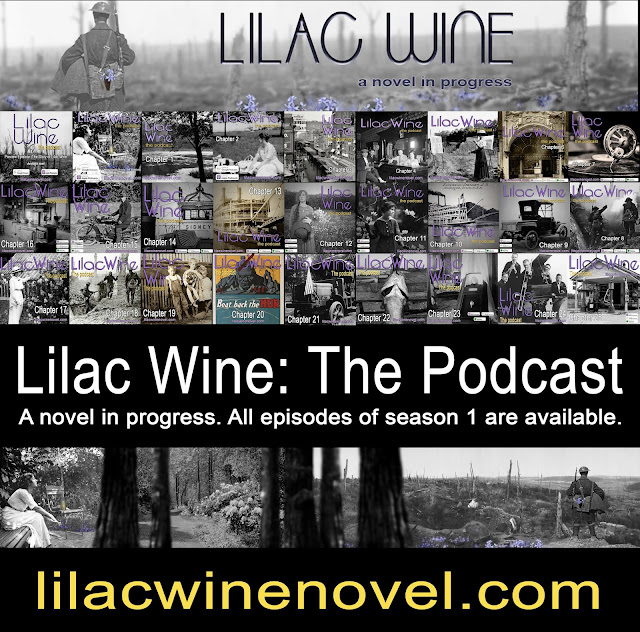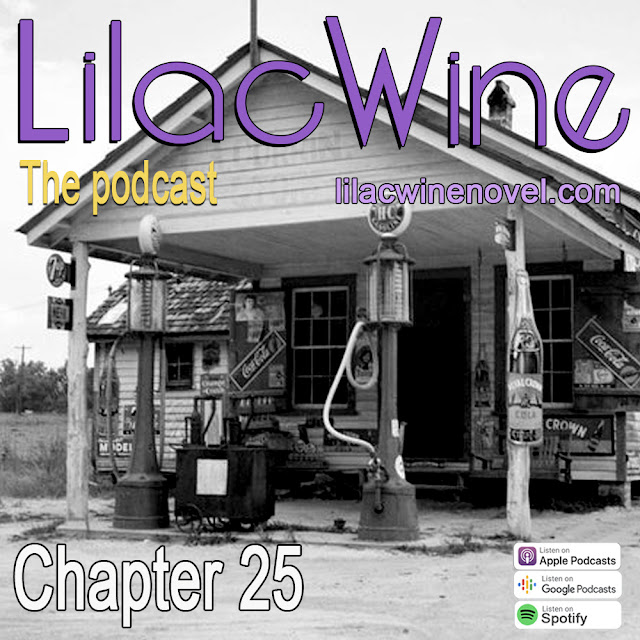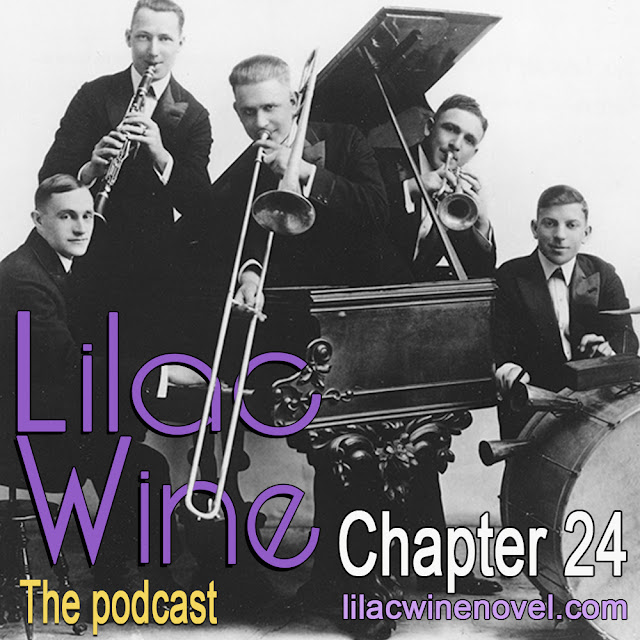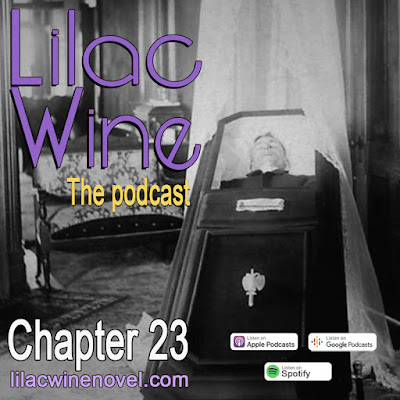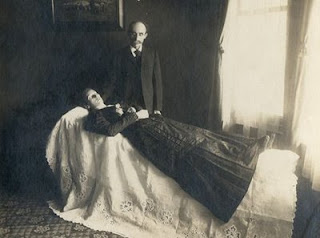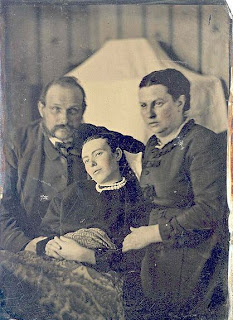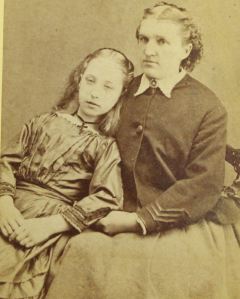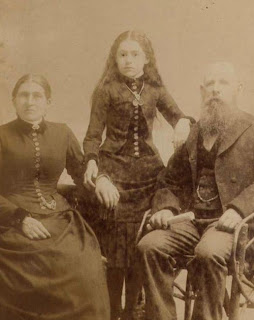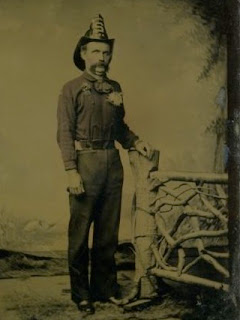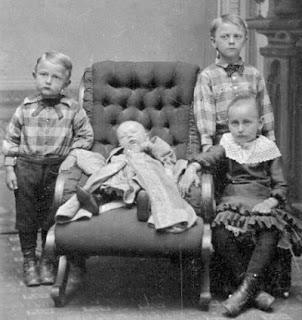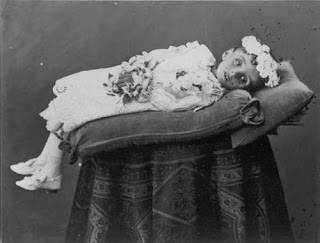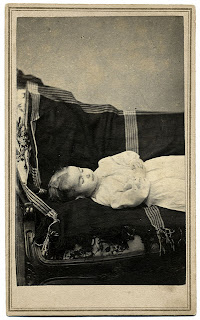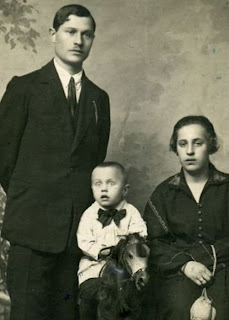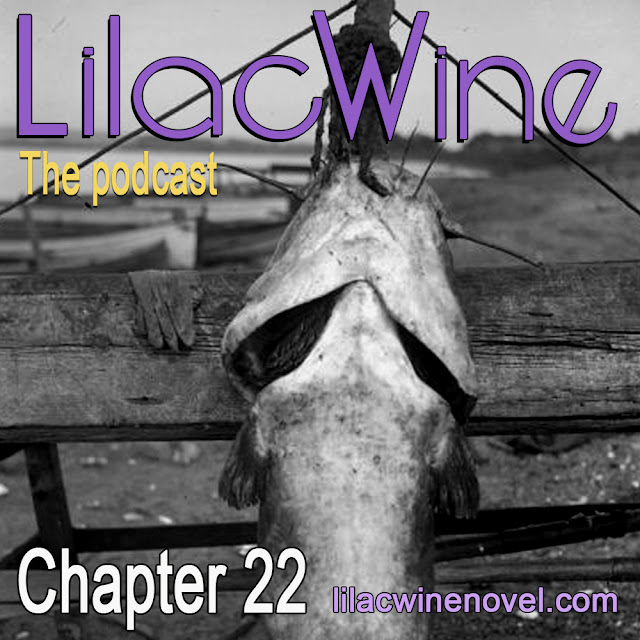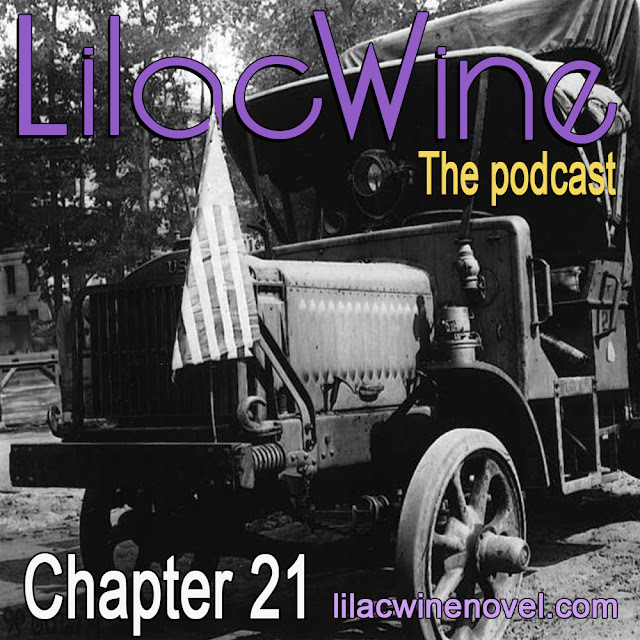All episodes of Season 1 of Lilac Wine: The Podcast are available. Season One consisted of 26 chapters of the novel in progress. The show is on hiatus, as I try to find time to write. I can't wait to revisit Lily Springs and continue the story of Abelia and Robert.
You can listen to the show anywhere you get your podcasts.
Sunday, March 1, 2020
Monday, September 2, 2019
Thank you for Listening!
Season One of Lilac Wine - The Podcast is now in the books, so to speak. Thank you for listening. I couldn't have done it without you.
We are currently on hiatus. Hopefully, I will be able to continue writing very soon and get Season Two off the ground.
In the meantime, please tell your friends about Lilac Wine, especially those who enjoy historical fiction.
If you haven't done so, please follow us on Facebook, Twitter and Instagram.
When will season two drop? To be honest, I have no idea. Life often gets in the way of writing. And anyone who knows me knows that I often have too much on my plate. Lilac Wine, though, always consumes my thoughts. Hopefully, new chapters will flow soon.
In the meantime, I would love to hear from you. What did you like about Season One? Anything I can do to make the podcast experience better? You can simply send your comments to comments@lilacwinenovel.com
I look forward to hearing from you. Thank you for listening.
Sincerely,
Bruce Janu
author of Lilac Wine
We are currently on hiatus. Hopefully, I will be able to continue writing very soon and get Season Two off the ground.
In the meantime, please tell your friends about Lilac Wine, especially those who enjoy historical fiction.
If you haven't done so, please follow us on Facebook, Twitter and Instagram.
When will season two drop? To be honest, I have no idea. Life often gets in the way of writing. And anyone who knows me knows that I often have too much on my plate. Lilac Wine, though, always consumes my thoughts. Hopefully, new chapters will flow soon.
In the meantime, I would love to hear from you. What did you like about Season One? Anything I can do to make the podcast experience better? You can simply send your comments to comments@lilacwinenovel.com
I look forward to hearing from you. Thank you for listening.
Sincerely,
Bruce Janu
author of Lilac Wine
Monday, August 19, 2019
Chapter 25, the Season Finale
The Season Finale of Lilac Wine-The Podcast is here! Billy considers his options for getting out of Lily Springs when an unexpected visitor changes everything. After the reading, author Bruce Janu talks about the episode and discusses the future of Lilac Wine. Listen now or in your favorite podcast app.
Tuesday, August 6, 2019
Lilac Wine-Chapter 24 is now live
In this chapter, Robert delivers a record to Abelia and they share an awkward dance on the porch to the fast-paced music of the Original Dixieland Jass Band. Listen below or in your favorite podcast app.
Monday, July 22, 2019
Lilac Wine - Chapter 23
Art is dead, and as is the custom in Lily Springs, which still at times has not left the 19th century, Robert must stand vigil through the night at Art's side. However, music brings him out into the night.
This chapter features discussions of turn of the century death rituals, such as mortuary photography. Back in 2012, I wrote an article about this phenomenon. It is being republished below.
In today's America, funeral practices and mourning rituals have become a highly sanitized and commercialized process. Funeral parlors and morticians provide a service that for most people in America is not only indispensable, but an economic powerhouse that generates over $20 billion annually.
That is not how it used to be, however.
In the 19th century and the early part of the 20th century, funeral rituals were much more personal and immediate. Most funerals were held at home, for example. The front rooms of middle class homes were called "death rooms," and were not used much for day-to day living but reserved for those times in life when one must mourn the dead. The deceased would be laid out in these rooms, sometimes for days. Flowers were used to help hide the odor as embalming was not something that most families could afford and was not something that was readily available in rural America until the 20th century when funeral parlors began to replace the in-home tradition of wakes and funerals.
The death of Abraham Lincoln and his subsequent embalming popularized the practice. Funeral parlor acceptance grew slowly and began appearing mainly in urban areas. By the turn of the century, most funerals in urban areas were held in funeral parlors. As a result, Ladies Home Journal in 1910 made the suggestion that the front parlor should no longer be a "death room," but a "living room" instead. As more and more people moved the process of mourning from the home to a local business, that is exactly what happened in American homes. The front parlors were now opened up, made bright and airy and became "living" rooms instead.
In my novel, Lilac Wine, a death occurs in the small Iowan town of Lily Springs. This, of course, necessitated some research into funeral practices of the early 20th century. One thing that has made the writing of this novel truly enjoyable has been delving into the past and learning just how different things were 100 years ago. A resident of the 21st century would no doubt be shocked as to what our forebearers did when it came to funerals.
The entire mourning process was guided by strict norms and etiquette. Not only were wakes and funerals held in the home, photographs of the deceased were commonplace. In fact, as photography was an expensive endeavor, most people reserved money for a formal photograph of their loved ones when they died. Post mortem photographers would be called in and a photograph would be taken of the deceased, often with loved ones standing or sitting near the body.
Sometimes, the body was arranged in such a way to be made to "look alive" and, using stands and wires the deceased would be propped up on couches, chairs or even standing in an official looking portrait.
Photographers often went to elaborate lengths to give the appearance of life to the deceased. Not only would they have the deceased standing in a pose, but eyes were sometimes painted on the closed eyelids to simulate life.
This practice was called Memento Mori (remember the dead) and was common from the invention of photography in the mid-1800s until the early 20th century. In fact, photographs of the dead were more common than any other photograph from this period of time.
As infant mortality was much higher in the 19th century than today, a majority of photographs from the time period are of deceased children.
In Lilac Wine, there is a death in Lily Springs. Although the novel takes place in 1917, much of rural America was still very much rooted in the practices of the previous century. And Lily Springs was no different from most small towns, teetering on the edge of modernity but still clinging to tradition. Robert was asked to stand next to the casket for a memento mori, which was being provided by the town photographer, John Hickman:
The inspiration for that passage came from a single photograph that broke my heart when I first saw it:
Victorians on both sides of the Atlantic took mourning very seriously and the elaborate rituals surrounding death may seem somewhat macabre today. However, we must remember that images of loved ones were not often made in life, as the process was so expensive for most families. So a memory of that person, even taken in death, became a way to cherish the memory of a loved one. And if that photograph could provide a reminder of how that person was in life, then the grieving process was made easier. It is all too easy for us to judge in the present as we are surrounded by imagery and take pictures of nearly everything. The Victorians weren't so lucky.
By the turn of the century, photography was becoming more affordable and funeral practices soon moved from the home to the funeral parlor. Memento mori became less of a necessity. As more and more people bought their own cameras and could afford the development of photographs, the same thing that happened to change front parlors to living rooms happened with photography. People began collecting photographs of the living and arranging them on walls and in photo albums.
The memento mori photographs of the 19th century may seem bizarre, but they stand as stark reminders of the fragility of life and the desperate need to cope with loss. But they also highlight the need that we have as human beings--in any age--to cope with mortality and grief.
------------------------
Links:
Dan Meinwald, "Memento Mori: Death and Photography in Nineteenth Century America." Terminals: UCLA, 1999
The Thanatos Archive
"Memento Mori ~Victorian Era Postmortem Photography"
"19th Century Photography" Paul Frecker London: Post Mortem Collection
Victorian Death and Mourning Photo Set on Flickr
This chapter features discussions of turn of the century death rituals, such as mortuary photography. Back in 2012, I wrote an article about this phenomenon. It is being republished below.
A Death in Lily Springs: Turn of the 20th Century Funeral Practices
In today's America, funeral practices and mourning rituals have become a highly sanitized and commercialized process. Funeral parlors and morticians provide a service that for most people in America is not only indispensable, but an economic powerhouse that generates over $20 billion annually.
That is not how it used to be, however.
In the 19th century and the early part of the 20th century, funeral rituals were much more personal and immediate. Most funerals were held at home, for example. The front rooms of middle class homes were called "death rooms," and were not used much for day-to day living but reserved for those times in life when one must mourn the dead. The deceased would be laid out in these rooms, sometimes for days. Flowers were used to help hide the odor as embalming was not something that most families could afford and was not something that was readily available in rural America until the 20th century when funeral parlors began to replace the in-home tradition of wakes and funerals.
The death of Abraham Lincoln and his subsequent embalming popularized the practice. Funeral parlor acceptance grew slowly and began appearing mainly in urban areas. By the turn of the century, most funerals in urban areas were held in funeral parlors. As a result, Ladies Home Journal in 1910 made the suggestion that the front parlor should no longer be a "death room," but a "living room" instead. As more and more people moved the process of mourning from the home to a local business, that is exactly what happened in American homes. The front parlors were now opened up, made bright and airy and became "living" rooms instead.
In my novel, Lilac Wine, a death occurs in the small Iowan town of Lily Springs. This, of course, necessitated some research into funeral practices of the early 20th century. One thing that has made the writing of this novel truly enjoyable has been delving into the past and learning just how different things were 100 years ago. A resident of the 21st century would no doubt be shocked as to what our forebearers did when it came to funerals.
The entire mourning process was guided by strict norms and etiquette. Not only were wakes and funerals held in the home, photographs of the deceased were commonplace. In fact, as photography was an expensive endeavor, most people reserved money for a formal photograph of their loved ones when they died. Post mortem photographers would be called in and a photograph would be taken of the deceased, often with loved ones standing or sitting near the body.
Sometimes, the body was arranged in such a way to be made to "look alive" and, using stands and wires the deceased would be propped up on couches, chairs or even standing in an official looking portrait.
Photographers often went to elaborate lengths to give the appearance of life to the deceased. Not only would they have the deceased standing in a pose, but eyes were sometimes painted on the closed eyelids to simulate life.
This practice was called Memento Mori (remember the dead) and was common from the invention of photography in the mid-1800s until the early 20th century. In fact, photographs of the dead were more common than any other photograph from this period of time.
As infant mortality was much higher in the 19th century than today, a majority of photographs from the time period are of deceased children.
In Lilac Wine, there is a death in Lily Springs. Although the novel takes place in 1917, much of rural America was still very much rooted in the practices of the previous century. And Lily Springs was no different from most small towns, teetering on the edge of modernity but still clinging to tradition. Robert was asked to stand next to the casket for a memento mori, which was being provided by the town photographer, John Hickman:
Robert respectfully declined John’s request to stand next to the casket and cast a mournful eye down upon its contents. He didn’t quite understand memento mori. Images of death haunted his dreams at night and he didn’t need such reminders during the day. When Robert was child, Abigail DeWitt, the young girl and occasional playmate who lived next door, died at the tender age of seven, the victim of typhoid fever. Robert watched from an outside window as the family made preparations for her funeral. A post mortem photographer was hired and Abigail’s little body was made to sit on her favorite wooden horse through the use of hidden stands and wires. Watching the man work on young Abigail’s remains reminded Robert of a puppeteer. After she was posed properly on her horse, pupils were painted on her closed eyelids giving her the appearance of life. Her parents then sat next to her in solemnity as the photographer took their picture.---from Lilac Wine, Chapter 23
The inspiration for that passage came from a single photograph that broke my heart when I first saw it:
Victorians on both sides of the Atlantic took mourning very seriously and the elaborate rituals surrounding death may seem somewhat macabre today. However, we must remember that images of loved ones were not often made in life, as the process was so expensive for most families. So a memory of that person, even taken in death, became a way to cherish the memory of a loved one. And if that photograph could provide a reminder of how that person was in life, then the grieving process was made easier. It is all too easy for us to judge in the present as we are surrounded by imagery and take pictures of nearly everything. The Victorians weren't so lucky.
By the turn of the century, photography was becoming more affordable and funeral practices soon moved from the home to the funeral parlor. Memento mori became less of a necessity. As more and more people bought their own cameras and could afford the development of photographs, the same thing that happened to change front parlors to living rooms happened with photography. People began collecting photographs of the living and arranging them on walls and in photo albums.
The memento mori photographs of the 19th century may seem bizarre, but they stand as stark reminders of the fragility of life and the desperate need to cope with loss. But they also highlight the need that we have as human beings--in any age--to cope with mortality and grief.
------------------------
Links:
Dan Meinwald, "Memento Mori: Death and Photography in Nineteenth Century America." Terminals: UCLA, 1999
The Thanatos Archive
"Memento Mori ~Victorian Era Postmortem Photography"
"19th Century Photography" Paul Frecker London: Post Mortem Collection
Victorian Death and Mourning Photo Set on Flickr
Monday, July 8, 2019
Lilac Wine - Chapter 22
On this episode of Lilac Wine - The Podcast, Billy takes Robert to the Mississippi River and teaches him the art of "jugging" catfish.
Chapter 22 is available now.
Chapter 22 is available now.
Tuesday, June 25, 2019
Lilac Wine - Chapter 21
In Chapter 21, Robert deals with the aftermath of his waking dream. While walking Abelia home from the picnic, he ponders his choice of coming to Lily Springs.
Chapter 21 of Lilac Wine-The Podcast is now available.
Chapter 21 of Lilac Wine-The Podcast is now available.
Subscribe to:
Posts (Atom)

